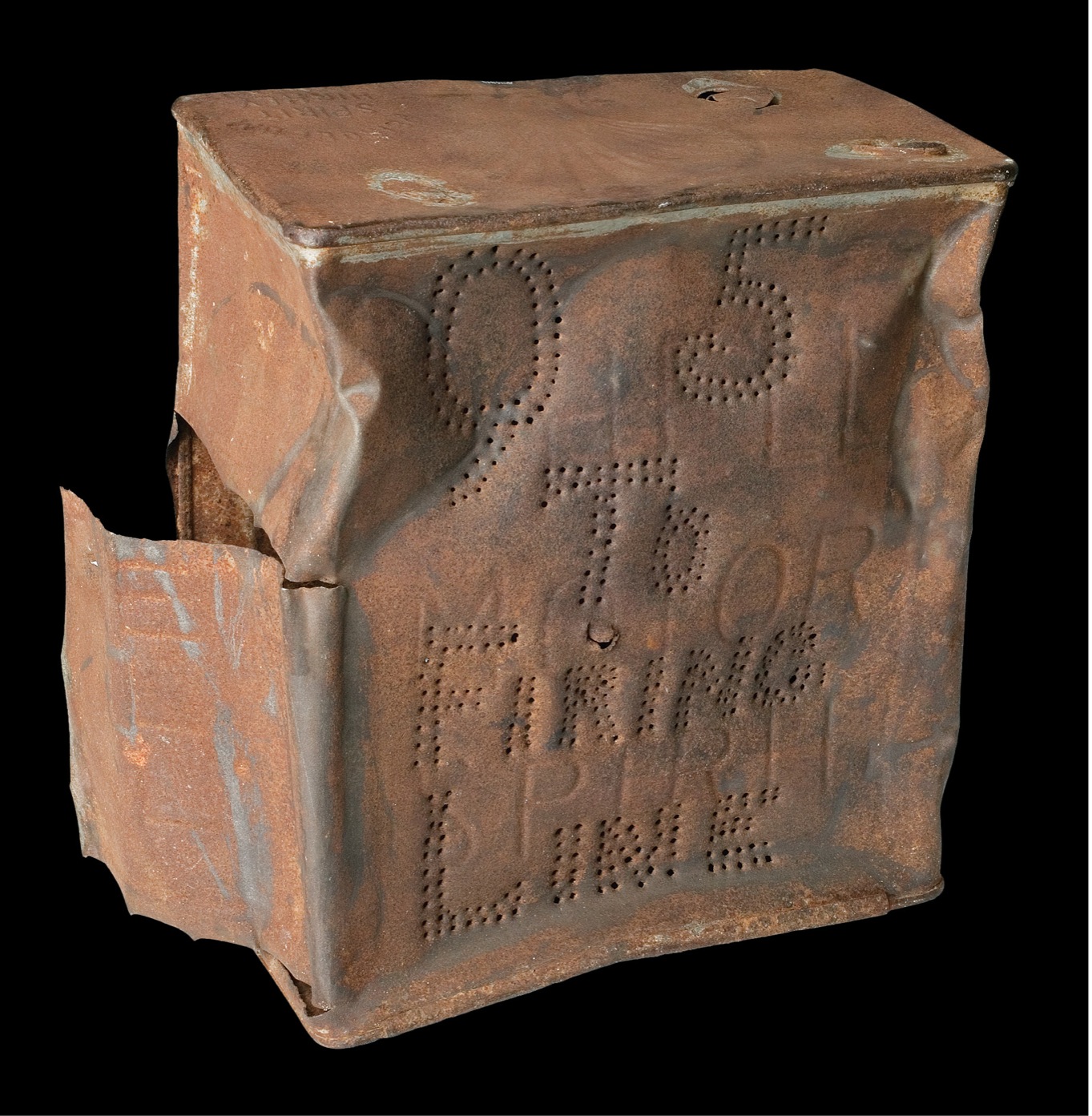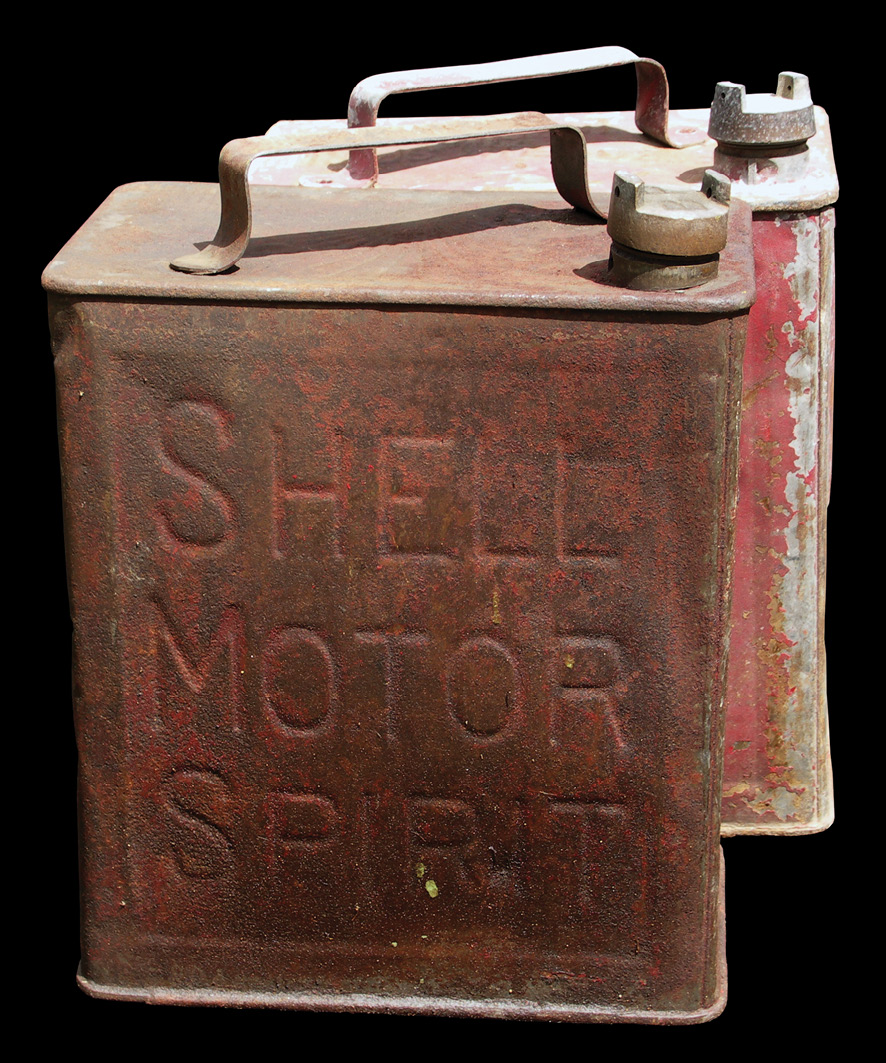37
Gallipoli trench sign
Country of origin: Australia (in Ottoman Turkey)
Date of manufacture: 1915
Location: Australian War Memorial, Canberra, Australia

THE DEVELOPMENT OF trench warfare led to the proliferation of individual trenches. There were, after all, many types—zigzag or traversed trenches for fighting; longer trenches intended as thoroughfares to allow troops to get to the front and wounded soldiers to get away from it; trenches designed to house garrisons so that they were not in the front line; and trenches in the rear areas to be held if the enemy broke through. From inconclusive scrapes in the ground in Flanders, trenches quickly became complex pieces of architecture that required planning and development. Trench systems soon became like subterranean towns housing thousands of people—all of them careful not to raise their heads above the parapet in daylight, for fear of having it shot off by snipers.
With the proliferation of trenches and trench systems came the need for mapping and signage so that new occupants could get their bearings. A routine developed on the Western Front whereby battalions of men would be cycled through the trenches, typically spending up to a week on the front line, before being taken out to the reserve trenches and then finally “out on rest”—though often such rest spells meant a return to the front line as rations carriers. It was necessary to direct soldiers through the maze of trenches, for although they were theoretically constructed in parallel lines—at least in the early stages of trench warfare on the Western Front—the re-entrants, salients, and redoubts would be interconnected by communication trenches (CTs) and minor trenches intended as latrines, entrances to dugouts, trench mortar batteries, and so on. Often, these were challenging. Relief of the trench garrisons relied upon local knowledge—with guides detailed to lead men in and out, reminding them all the while to keep their heads down in the face of artillery and rifle fire.
Most soldiers would travel to the front line from the rear areas along crowded CTs at night—bustling, narrow thoroughfares 6ft deep, with barely enough room for men to pass. Although relieving battalions would be guided to the front by experienced soldiers from the battalion about to be relieved, sign boards would still be necessary to direct them, perhaps picked out by candlelight. Many of the long CTs had picturesque names, chosen at will and whim; these would be painted on rough and crude boards to aid in direction finding. Such boards would also exist at the front line; others, with a more urgent message, might warn of the dangers from snipers, artillery fire, or the physical hazards of loose or low wires, or treacherous duckboards.
Though trench warfare is most commonly associated with the Western Front, different species of it developed in the icy mountains of the Alps, cut into the solid rocks of the high mountains that separated Italians from Austro-Hungarians, as well as in the complex terrain of Salonika, where a multinational force faced the Bulgarians across malaria-infested valleys and challenging mountain terrains. But arguably the most intense and challenging conditions were those that faced the Australian and New Zealand Army Corps (ANZAC) during their eight-month occupancy of the steep, parched, and crumbling slopes above Anzac Cove in the Gallipoli Peninsula. From April 1915 to January 1916, British, Indian, French, and ANZAC forces clung to small enclaves of the peninsula while they planned the opportunity to break out of their extended beachheads—an opportunity that had been squandered when they first landed. Here, with impossible routes and ever-so-close trenches, precarious saps, and shallow-scraped dugouts, the ANZACs attempted to outwit their Ottoman opponents. And, through it all, finding their way to the front line was fraught with danger.
This trench sign, from the collections of the Australian War Memorial, is made from a rectangular Shell Petroleum tin adapted to make an illuminated trench marker, which was recovered from the battlefields of Gallipoli in 1919, a silent sentinel left behind after the evacuation. The marker was found on a hill above Shell Green in the ANZAC sector. Like much of the life of the ANZACs at Gallipoli, it is extemporized; in this case, fashioned from recycled materials. The reuse of materials such as tins and wooden boxes was commonplace at Gallipoli, especially during the early stages of the campaign, when there were major difficulties with supplies. On the front of the tin, over the impressed “Shell Motor Spirit” details, is punched the text “Q5 / TO / FIRING / LINE.” Q5 was a trench or sap leading to the firing line. The text has been created by nail punch, which forms the outline of each letter and number. The side of the tin has been cut to form a rectangular “door” to allow a candle to be inserted inside to illuminate the text at night in order to assist soldiers making their way in the dark. There is evidence of the war that raged around this mute bystander: there is a small shrapnel hole in the front of the tin, and another in the side “door.”
